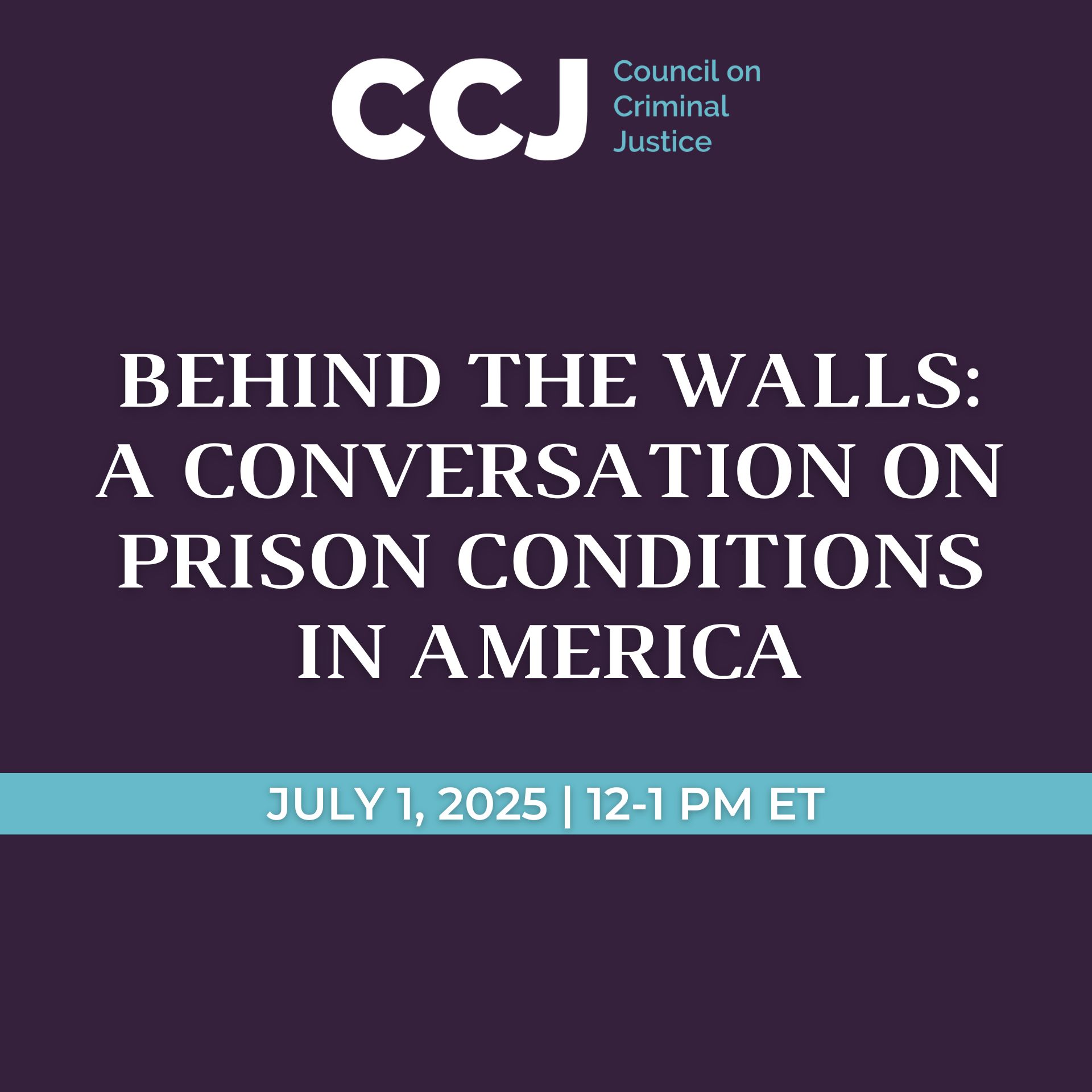Black-White differences remain but imprisonment disparities shrunk for all crime types, and gaps in some measures nearly closed
EMBARGOED FOR RELEASE
5:00 a.m. ET, September 22, 2022
Contact: Tania Stewart
tstewart@mrss.com
WASHINGTON, D.C. – While troubling racial and ethnic disparities persist within the U.S. criminal justice system, new research released by the Council on Criminal Justice (CCJ) today shows that the gap between Black and White state imprisonment rates narrowed significantly over the first two decades of the 21st century. In 2020, Black adults were imprisoned at 4.9 times the rate of White adults, down from 8.2 times in 2000-a 40% drop.
Black-White disparities in state imprisonment rates fell across all major crime categories—violent, property, drug, and public order—with the steepest decline occurring for drug offenses. Disparity in drug imprisonment rates dropped by 75%, accounting for about half of the overall decrease in the imprisonment rate gap between White and Black people.
The new research also found that while responses to the COVID-19 pandemic in 2020 led to an unprecedented 15% drop in state prison populations, that historic decline did not produce a change in Black-White imprisonment disparities.
The report, Justice System Disparities: Black-White National Imprisonment Trends, 2000-2020, is the latest research produced for CCJ’s Pushing Toward Parity project. It updates an earlier CCJ study on disparity trends in correctional populations that focused on data from 2000 to 2016, the most current then available. This report extends the work through 2020 (2019 for certain crime-specific analyses) using newly released federal data.
“Since our last report, we’ve learned that disparities in imprisonment rates for Black and White people fell throughout the first two decades of this century, and that half of this decrease occurred in the first five years of the period, as the pace of change slowed over time,” said William J. Sabol, a Georgia State University (GSU) criminologist who conducted the analysis along with CCJ Senior Fellow and GSU Assistant Professor Thaddeus L. Johnson. “Overall, imprisonment rates for Black people fell 47% from 2000 to 2020, while imprisonment rates for White people declined by just 11%.”
Sabol and Johnson said the growth of the Black U.S. adult resident population accounted for a majority (65%) of the Black imprisonment rate decrease between 2000 and 2020. That, along with declining disparities in prison admissions (see below) between Black and White people, helped shrink the overall imprisonment disparity.
The new report also found that:
- The Black-to-White disparity in arrest rates fell between 2000 and 2020, with the drop for drug and property crimes driving the decrease. By 2019, the Black-White disparity in arrest rates (per estimated offender based on victim accounts) for non-fatal violent crimes was eliminated.
- The disparity in prison admissions for Black and White people has dropped. In 2000, Black people were 7.2 times more likely than White people to be admitted to state prison; by 2020, they were 3.2 three times more likely. The Black-to-White disparity in admissions for property and drug crimes (per arrest) was nearly eliminated.
- Admissions for technical violations of parole no longer drive imprisonment disparities. In 2000, Black people on parole were more likely to be revoked and returned to prison for breaking the rules of their supervision than White people; by 2020 White individuals were slightly more likely to be revoked.
- Disparity in length of stay in prison increased between 2000 and 2020. Black people served an average of 0.2 years longer in 2000 and 0.7 years longer in 2020. The time served gap grew most dramatically for people convicted of drug crimes.
Johnson said that while it is encouraging to see racial gaps in imprisonment narrow, much work remains to be done “to move our nation toward a justice system worthy of widespread trust.”
“With racial disparities, there are many problems we can blame the justice system for and many for which the system is not to blame,” Johnson said. “Unless we address all of the issues-both within the system and outside of it-we’ll be stuck having this same conversation about crime and structural inequities for years to come.”
The disproportionate representation of people of color in the justice system has received substantial scrutiny from researchers, the media, and others concerned that disparities reflect enduring, systemic race-based bias. Academic literature has produced numerous explanations for racial differences in criminal involvement, from the economic and social legacy of slavery and Jim Crow laws, to contemporary discrimination in housing and education systems, to prejudice by criminal justice decision makers and the effects of harsher sentencing policies adopted in the 1980s and ‘90s.
Sabol and Johnson said that racial disparities in imprisonment will persist without significant reductions in differential rates of violent offending, the length of prison terms for violent crimes, and/or the influence of criminal history in sentencing and release decisions.
In the coming months, CCJ will release additional reports from Sabol and Johnson that focus on disparities related to Hispanic and female correctional populations. Subsequent analyses will examine disparity trends in a dozen individual states. Support for the Council’s research on racial disparities comes from Arnold Ventures, The Ford Foundation, Microsoft, and Southern Company Foundation, as well as the John D. and Catherine T. MacArthur Foundation, #StartSmall, and other CCJ general operating contributors.
About the Council on Criminal Justice
The Council on Criminal Justice (CCJ) is a nonpartisan invitational membership organization and think tank that advances understanding of the criminal justice policy challenges facing the nation and builds consensus for solutions based on facts, evidence, and fundamental principles of justice.
Other CCJ task forces have addressed federal criminal justice priorities, COVID-19 and criminal justice, policing, violence reduction, and Medicaid and reentry. Another task force is currently examining long prison sentences, and a commission focused on the extent and nature of military veterans’ involvement in the criminal justice system was launched in August.
To learn more, visit counciloncj.org.



